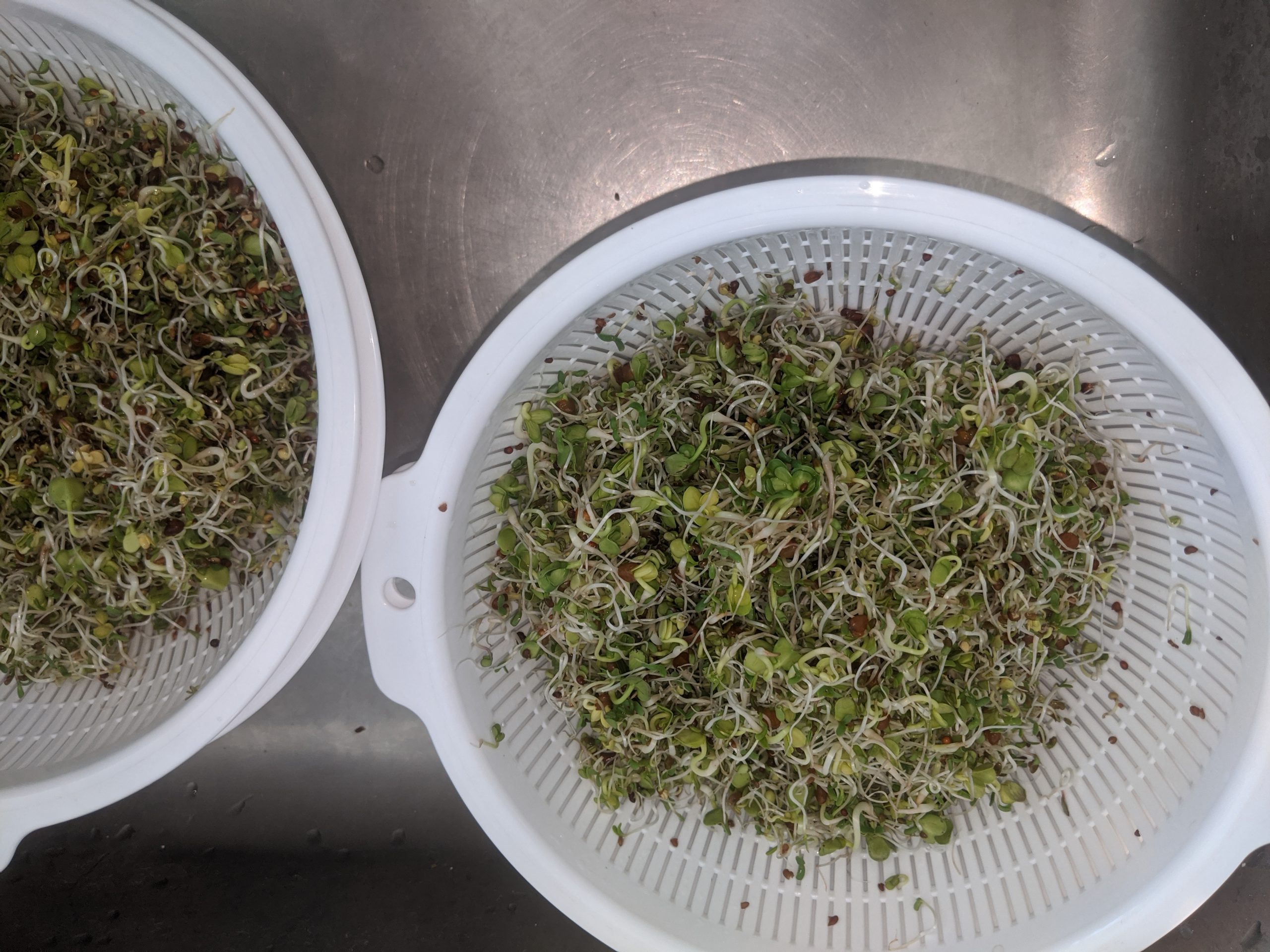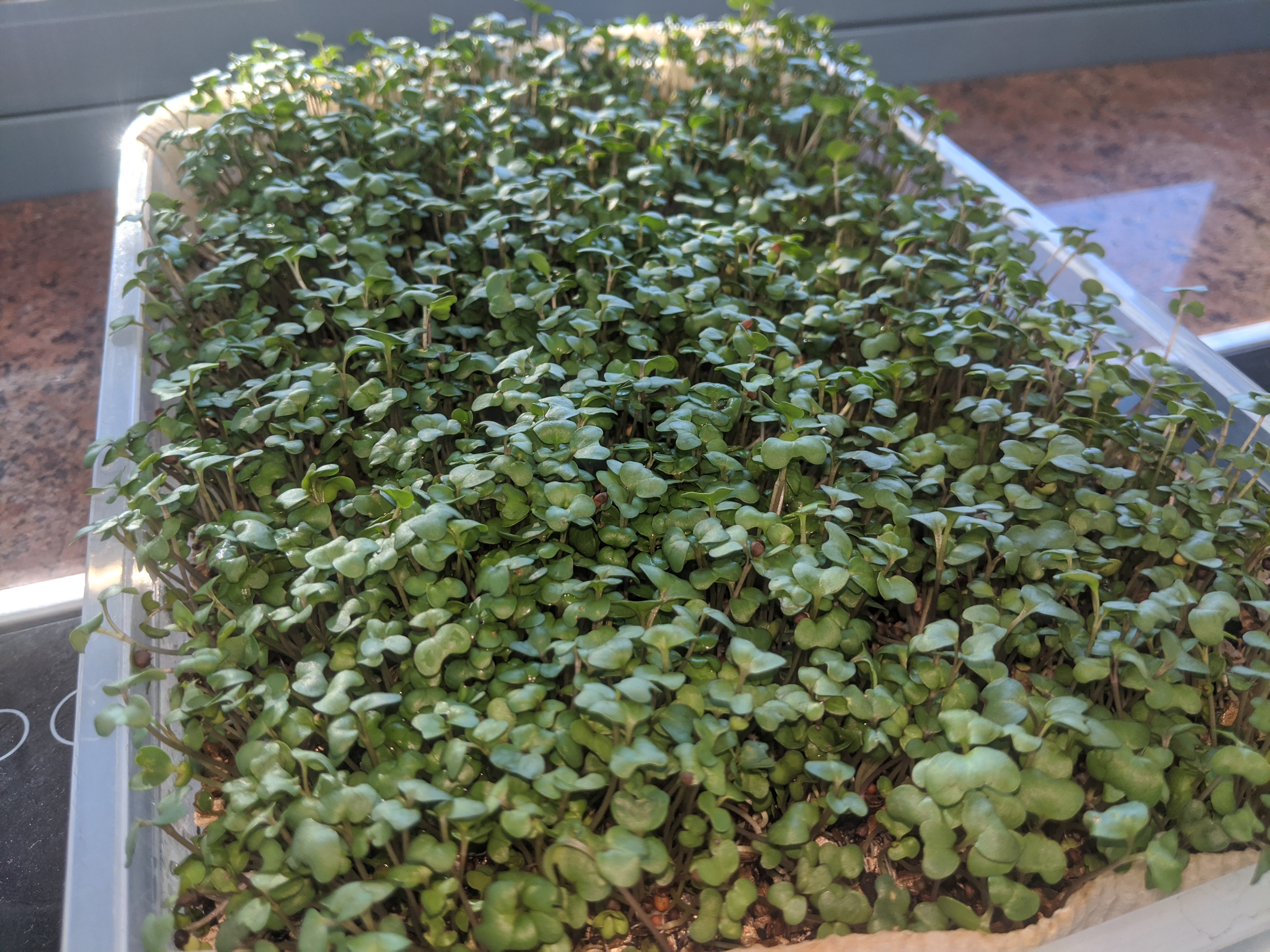Sprouting

I used to sprout in back in younger herbal days – I recently returned to include this in our meal without depending on supermarkets.
Benefits:
- non-linear growth, large harvests, several meals from a few spoons of seeds
- nutrient density – heuristically you can think of Broccoli Sprouts is 100x better than eating Broccoli vegetable. BTW steaming Broccoli vegetable is 10x better than microwaving.
- harvesting within 5-6 days.
Effort:
Is around 5mins per day, we use Ted’s Living Apartment loose sprouting approach with some colanders as seen in the picture above.
Microgreens
These trays of green are also great bioavailable foods. They have a longer period of growth in vermiculite, not as efficient speed of readiness – but look good!

Veges
Wherever we live, there is usually a marauding possum the eats sweet shoots of fruits and veges. The current combatants are possums and bandicoots and our current solution is these pods.
Things like cress, sweet potato, mint, passionfruit seem to not be interesting and can survive outside the pods but that could change in just one night.
Benefits:
Most health gurus say cruciferous and leafy green vegetables are the way to go. They are also super-easy to grow so get on with it:
- Radishes are superfast and better than supermarket.
- Lettuce, Rocket, English spinach take a few weeks.
- Kale usually ends out being the sacrificial vege that the bugs decimate, we don’t use poison, so this is the first victim.
- Sorrell is voluminous but needs to be blanched. We like it in a creamy sauce on something like chicken.
Effort:
These pods retain water in the base, so…whilst we have rainwater tanks the pods are very economical on water. Initial setup was a few hours.
Actual gardening effort other than harvesting for lunch/dinner is 15 minutes per week.
Kombucha – 15 minutes per week
Non-Dairy Yoghurt
Native Bees
Not actually food, but we all need to help bees and they help gardens.

